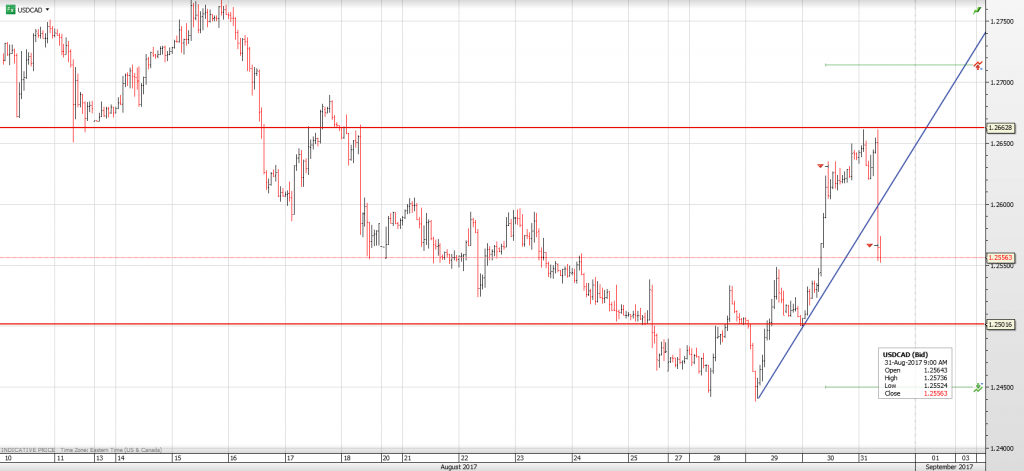The Canadian economy is on fire. At least, that was the case in the second quarter. Q2 GDP gained 4.5%, q/q, soundly thrashing the 3.7% that was forecast. Q3 ha also started on a positive note thanks to the 0.3% gain in June GDP which beat the 0.1% forecast.
USDCAD collapsed on the news. Prices were hovering around 1.2660 before the release and are currently (as of 6:00 am PDT) sitting at 1.2565, almost fully erasing yesterday’s post-US data gains.
There was also a lot of US data this morning. Initial Jobless Claims and July Personal Income were slightly better than predicted while Personal Spending was a tick lower than forecast. Personal Consumption Expenditures for July, year over year and month over month were as expected.
That news took some of the wind out of the US dollar’s sails which had started the New York session with a bid.
EURUSD traded sideways in Asia and eased lower in Europe. Eurozone inflation data (Actual 1.5% vs forecast 1.4%) beat expectations, Unemployment was as expected and German Retail Sale missed.
Reuters reported that ECB officials are concerned about the strength of the euro and will not make an announcement about tapering at next week’s ECB meeting. The morning’s US data lifted EURUSD from the low of 1.1824 to 1.1845.
Sterling traded uneventfully in Asia but dropped from 1.2928 to 1.2875 in Europe. Month end demand for dollars and EURGBP buying overshadowed a Bank of England Monetary Policy Committee member’s call for a rate hike. GBPUSD jumped to 1.2880 from 1.2853 after the US economic reports.
In Asia, the New Zealand dollar was the big loser thanks to weaker than expected data. The ANZ Business Confidence index fell to 18.3 in August, down from 19.4 in July. The Activity Outlook also dropped. (Actual 38.2% vs previous 40.3%) The RBNZ Governor Graeme Wheeler’s comments on Wednesday, calling for a weaker currency, and the soft data drove NZDUSD from 0.7208 to 0.7146
AUDUSD drifted lower although losses were buffered by mixed China data. China August Manufacturing PMI rose 51.7 vs. forecast of 51.3, while non-manufacturing PMI shrank to 53.4 from 54.5
USDJPY climbed to 110.61 from 110.22, supported by yesterday’s strong US GDP data and reported buying for month end rebalancing.
There are reports that the US dollar will be bought to satisfy month end portfolio rebalancing requirements. If so, any USDCAD spike may be a selling opportunity due to the strength of today’s Canadian data.
USDCAD Technical outlook:
The intraday USDCAD technicals flipped from bullish to bearish this morning after prices blew through support at 1.2605. A break below 1.2540 would open the door for another test of 1.2450 support. USDCAD needs to break below 1..2440 or above 1.2750 to provide fresh direction. For today, USDCAD support is at 1.2540 and 1.2510. Resistance is at 1.2605 and 1.2660.
Today’s Range 1.2510-1.2605
Chart: USDCAD 30 minute






